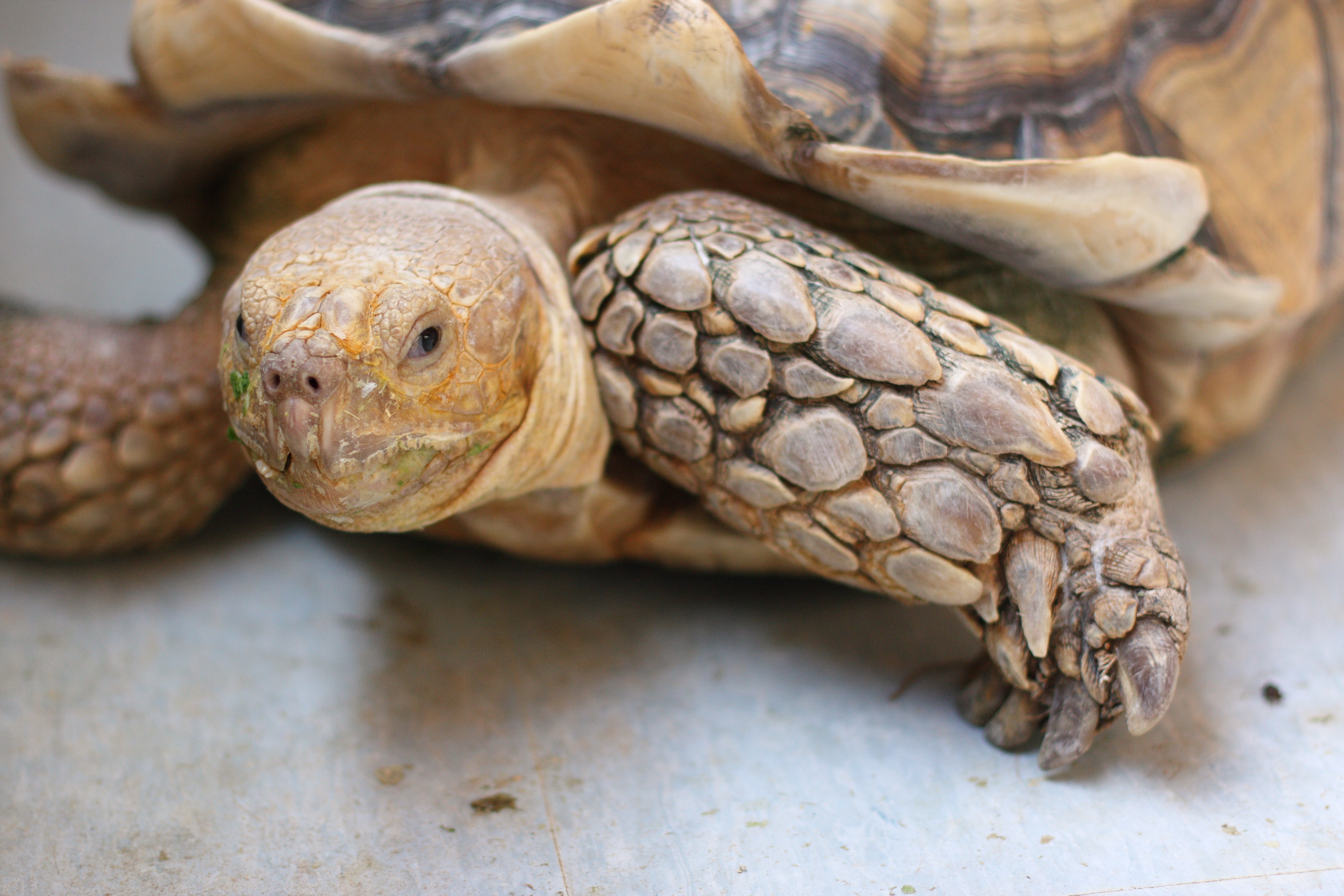
When you decided to get an exotic pet, did learning a bit of carpentry and landscaping cross your mind? You may have to get your hands a bit dirty to house a shelled companion of your own. You see, several species of tortoise grow quite large, including commonly kept exotic pets like the red foot tortoise and the African spur thigh tortoise, also called a sulcata tortoise. If you are considering keeping a large tortoise as a pet, you have to consider enclosure size in order to care for the animal ethically.
Most people keep large tortoises in outdoor enclosures at least part of the time to accommodate the room they need to roam. That being said, most backyards are not equipped to be tortoise-friendly. So you’ll probably need to put in a bit of work to create a suitable space. Here’s what you need to know.
Let’s talk about size
Just how big does a tortoise enclosure need to be? Red foot tortoises require a minimum of 3 feet by 2.5 feet. And for a large sulcata tortoise, you want a space that is at least 8 feet by 6 feet.If you plan to keep multiple tortoises together, you’ll need even more space.
Why do they need so much room? For one thing, all pets need exercise time and interactions. Tortoises have a reputation for being slow, but that doesn’t mean they don’t need to move at all. In fact, you may be surprised by their agility. If you keep your large tortoise in a space that’s too small, it will be unhappy and develop health problems. However, as long as you have the space, you can make a fairly comfortable home for your tortoise.
Get the substrate straight
Regardless of whether you select a tropical tortoise like the red foot or a desert tortoise like the sulcata, you need substrate that keeps the bottom of the enclosure dry. A damp enclosure can lead to severe shell infections, blisters, and abscesses, as well as respiratory diseases. Peat moss and coconut fiber work well for a variety of large tortoises.
A tropical mix substrate can be used for tortoises in a humid environment, and a mixture of sand and substrate works well for dry environments. Remember that you should select a tortoise that is adapted to an environment close to the outdoor climate where you live. Otherwise, you’re going to have a difficult time keeping your pet happy and healthy outdoors.
What you need to know about the landscape
If you’re starting with a perfectly flat and manicured lawn, you’ve got a bit of work ahead of you. Your tortoise doesn’t want flat, plush grass. Some sandy or rocky areas are preferable, and you absolutely want to build the enclosure on a slope, or create a slope. This helps your tortoise to right itself if it ends up on its back, and provides the kind of landscape they like to wander up and down. It's a smart idea to build up the landscape artificially after putting down hardware cloth or concrete. This keeps your tortoise from digging a tunnel out of their area.
Other than that, you should have fencing or walls around the tortoise area, and ideally a cover, that will keep out predators. Yes, tortoises will climb fences, so think fairly high and difficult to get a foothold on. And you'll want some form of hideouts, like a doghouse, hutch, or run box, placed in the enclosure to give your pet a safe place during rain or when they feel threatened.
You should also consider that if you live in a climate that gets cold part of the year, you’re going to need a dedicated indoor space with climate control for your tortoises. Now that you know the primary requirements for an outdoor habitat, you can get creative with it. As long as you're meeting your pet's needs, there is no exact right way to create a large tortoise enclosure. Follow The Tye-Dyed Iguana blog for more tips on tortoise care.
